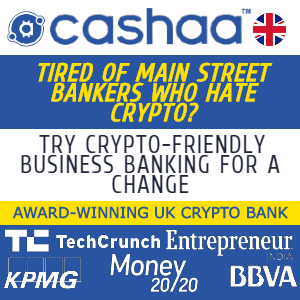By Sebastien Flak (Director, Crypto Solutions) and Olivier Hezelot (Executive, Real Estate), Geneva Management Group
Crowdfunding, also known as “community and participating funding”, dates back to the 1700s. But it wasn’t until 1875 that it bore fruit for a landmark project which is world famous to this day. It was thanks to fundraising/crowdfunding, mainly carried out by the French citizenry, that New York’s most famous icon, the Statue of the Liberty*, ever saw the light of day.
Fast-forward to over a century later and the internet has truly democratised crowdfunding. Everyone, from startups to creatives and charitable projects, can use crowdfunding to turn their projects from dreams into reality (provided they get enough buy-in, of course).
Exciting as the online crowdfunding revolution has been, the introduction of blockchain technology and cryptocurrency has the potential to fundamentally change the way investment works.
In the era of digitisation and the emergence of blockchain technology, the tokenisation of assets has gained substantially more steam. Tokenisation refers to the process of incorporating rights related to an underlying asset into a digital token on the blockchain ledger. It is therefore quite easy to register a title deed on the ledger, thus ensuring its traceability, immutable form and ability to be audited.
In the case of an investment vehicle aimed at raising funds, the use of blockchain and the issuance of digital investment tokens offers additional advantages, such as lower costs (compared to an IPO), an automated process (via the use of smart contracts), and traceability. Investors also benefit from the new business model: disintermediation, transparency, lower entry costs and access to a local, national or international investment portfolio.
For many of us, a real estate investment remains safe, sustainable, and tangible. However, with a direct investment requiring a significant capital outlay and/or investment via a real estate fund requiring some knowledge of the financial markets, the barriers to entry can be unfeasibly high. Moreover, in countries where an absence of reliable land registers limits investment, access to property encourages fraudulent practices.
Switzerland, with its legal framework and FINMA’s position on the issuing of digital tokens, has positioned itself at the vanguard of this new tech. Any country that follows its lead is likely to benefit as startups such as TokenEstate (real estate tokenisation), Tend (asset tokenisation), and Mt Pelerin (tokenisation of shares) illustrate how just how many asset classes blockchain can unlock.
It’s easy, for example, to imagine the advantages of tokenisation on the world of real-estate. However, this would mean that the land registry adopts and recognises blockchain registration as valid and legal within an enforced legal framework. Certain countries such as England, Switzerland, Sweden or Brazil ** are already studying the feasibility of such projects and the use of blockchain may well replace the cadastre and other land registries.
As is the case with all forms of innovation, these kinds of blockchain solutions won’t be implemented uniformly. There may even be attempts to halt their progress by state and private actors alike. Those who embrace blockchain, however, will ultimately win out. We’ve come a long way from raising funds for the Statue of Liberty and there’s no turning back.







